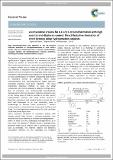A consecutive process for C–C and C–N bond formation with high enantio-and diastereocontrol : direct reductive amination of chiral ketones using hydrogenation catalysts
Abstract
High diastereoselectivity was observed in the Rh-catalysed reductive amination of 3-arylcyclohexanones to form tertiary amines. This was incorporated into a one-pot enantioselective conjugate addition and diastereoselective reductive amination, including an example of assisted tandem catalysis.
Citation
Gilbert , S H , Viseur , V & Clarke , M L 2019 , ' A consecutive process for C–C and C–N bond formation with high enantio-and diastereocontrol : direct reductive amination of chiral ketones using hydrogenation catalysts ' , Chemical Communications , vol. 55 , no. 45 , pp. 6409-6412 . https://doi.org/10.1039/c9cc00923j
Publication
Chemical Communications
Status
Peer reviewed
ISSN
1359-7345Type
Journal article
Description
Authors thank the University of St Andrews, and the EPSRC Centre for Doctoral Training in Critical Resource Catalysis (CRITICAT) for financial support [PhD studentship to SG; Grant code: EP/L016419/1].Collections
Items in the St Andrews Research Repository are protected by copyright, with all rights reserved, unless otherwise indicated.

